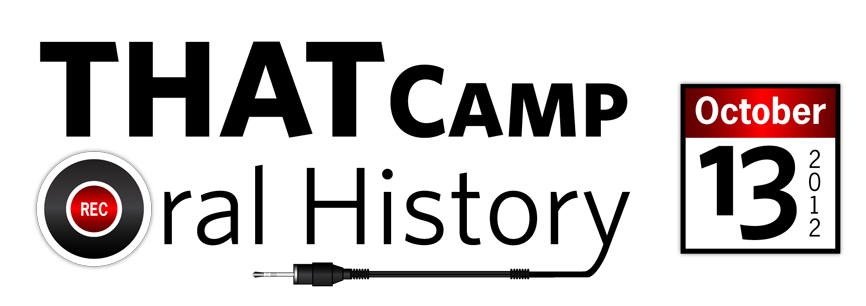Hello:
I would be interested in a session on adding geospatial information, which would allow locating and collocating digital oral histories on such maps as HistoryPin. Given its timeline feature, it may support establishing relationships between recordings and other digital content. In the Veterans History Project, geographical locations are provided for the location service — albeit very generally, such as Korean War, Vietnam War — and the interviewees’ state of residence, but this is less clear for World War I and II topics. If Digital History aims at providing such data at a greater granularity, specifics should be added, which would provide historians with additional leads to support research on very specific topics. However, not all oral histories (I mean both the recording and transcript) may be published digitally if the interviewees do not agree to such publications, so a more diversified strategy may be needed. For recordings with permissions, the geo-tags and other key words should adequately describe the media. If the transcript is also published (with the interviewees’ and interviewers’ permission), perhaps TEI should be used to add the geo-location in body of the transcript as well. This approach will require extensive textual analysis, but it may well be worthwhile. For oral histories without either the transcripts or recording or both accessible online, the catalog record should contain this information in greater detail, and researchers may still be able to listen to the recordings, read transcripts, and develop a map with geographical locations mentioned in the interviews. The MARC standard used by libraries, EAD in use at archives, and the various metadata schemas like Dublin Core have fields for geographic locations to accommodate such enhancements. I hope to see an interdisciplinary group of archivists, digital historians, geographers, and librarians in such a session if possible.

This would certainly be a useful discussion for me! I work out of an immigration history museum, so locating our oral history (and everything else) is extremely important. Although I don’t have a lot of experience with GIS, we are working with a collection management system that provides (DC-compliant) geolocation, and we’re experimenting with controlled vocabularies for place names in transcripts, etc…
Thanks. Your topic sounds fascinating, and you are on the right track by adding the geographical locations. At some point, they should be mapped to coordinates that can be interpreted by ESRI’s ArcGIS, QGIS (open source), HistoryPin, Google Maps, etc. Have you worked with social scientists on mapping the movements of immigrant groups?
I’m definitely interested in this topic. In my project I’m dealing with the issue of long video recordings of oral histories by elderly storytellers, who tend to talk about a wide variety of places in different temporal and topical contexts. I clearly can’t pin these to a single location. Getting the various places and times from the stories is already tricky, but presenting the information in a usable way is another thing.
I’m also wondering what the most flexible and portable way to encode this information once we have it. DC doesn’t seem to be robust enough, and coming up with my own format won’t make the information likely to be reused.
Thanks. I agree that DC is not robus enough, but DSpace — what we use for the OhioLINK DRC can be configured to make certain fields hyperlinked, and if we add the geospatial data in a way that let’s say Google Maps provides, it might just be a step. More tomorrow. I am looking forward to this discussion and learn from participants.